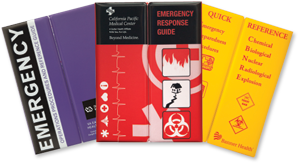Written by: Dr. Scott Poland
In August, the U.S. Department of Homeland Security issued a public awareness bulletin about mitigating the threat of school violence because, as the report noted, DHS believed “the threat of targeted violence will remain elevated as more children return to school full-time.”
And it has, indeed, been a violent year. When we just look at gun violence – which makes up a relatively small percentage of school violence overall — there were 24 school shootings between January and late October 2021, 16 of which happened after Aug. 1, according to Education Week. The shootings resulted in six deaths and 34 injuries. Comparatively, in 2020, when many schools were not seeing students in person, there were 10 shootings. Additionally, there were 25 in 2019 and 24 in 2018.
When thinking about school violence, it’s important to keep in mind that school shootings are only a small part of it. Threats of school violence are a growing problem nationwide, and these threats have increased in both frequency and anonymity due in part to social media. Threats – whether they are hoaxes or actual threats — can spread panic throughout a school community and can have a profoundly negative effect on the learning environment.
In order for schools to recognize threats and stop violence from happening, they need threat assessments. Proper threat assessments allow schools to identify and mitigate threats before tragedy occurs.
A threat assessment is a process of evaluating the risk of violence posed by someone who has communicated intent to harm someone. It considers the context and circumstances surrounding a threat in order to uncover any evidence that indicates the threat is likely to be carried out.
Consider these scenarios:
- A student informs an instructor of a rumor of a death threat made by another student
- A school receives a bomb threat on social media
- An instructor finds a note showing intent of violence
Would your school staff know how to respond? Threat assessment helps schools address these types of scenarios. It also helps to:
- Reduce the risk of violence
- Identify educational needs and support services for students who have made a threat
- Reduce legal liability by following reasonable and accepted practices for violence prevention
Implementing Threat Assessments in Schools
Both the U.S. Secret Service and the U.S. Department of Education have endorsements for proper threat assessment. When I provide threat assessment training, I focus specifically on schools. This threat assessment process includes four steps:
- Identifying threats made by students. Threats can be verbal, written, artistic (drawings, etc.), or gestured. They can be direct or indirect. For example, in many circumstances, possession of a weapon can be assumed to be a threat without a verbal, written, artistic or gestured threat.
- Evaluating the seriousness of the threat and the danger it poses to others. This includes recognizing that all threats are not the same. When evaluating threats, it’s important to keep in mind the student’s motives and goals. Do they have a grudge against the potential victim? Have they made a plan or acquired weapons? Have they communicated with others about their intent? There are social factors to consider too. For instance, have they exhibited hopelessness or despair? Do they lack a trusting relationship with adults? Have others expressed concern about them? It’s important to consider the student’s state of mental health and whether they need support in that regard.
- Intervening to reduce the risk of violence. This involves interviewing the student. Interviews serve two purposes: 1) they help gather information and 2) they can be an effective form of intervention. When a student knows their behavior has been noticed and has an opportunity to share their story, it can help mitigate the threat. Having these conversations also helps schools identify ways to help the student.
- Following up. This includes assuring everyone of their safety by communicating the actions the school is taking to ensure safety. It also includes providing information about the threat without naming the person who made the threat and meeting with staff and parents about the threat. Follow-up is needed to make sure the threat has been mitigated and also to make sure the student who made the threat gets the support they need. It’s also important to note when we’re thinking about gun violence, that most of the guns used in school shootings come from home. I strongly recommend parents secure any guns in their homes and that they have discussions with their children. Let them know it’s inappropriate to joke about school violence and that the consequences might be severe, even if the student has no grudge, plan, or weapon.
Here are two scenarios that I’ve mentioned in some of my trainings. They give a sense of how threat assessment can help a school figure out how to address a situation.
SCENARIO 1 – A middle school student “B” says his friend “S” is planning something big. The threat is reported to the administration which takes it seriously and notifies local police. Local police interview both students separately. B tells the police he was joking and S never made a threat against the school.
S denies she ever said anything about school violence and remarks, “I do not know why someone threw me under the bus.” The police search the home of S and find no weapons. They seize her computer which has no hit list or postings about violence. School records indicate a few minor discipline reports for S in elementary school. S likes to draw and her drawings in a school notebook often have violent themes. And, she turned in a school paper about a serial killer. Her paper received a grade of an A and did not concern her teacher. S is very involved in the church where her father is the minister and she is very active in the care of her younger siblings.
The police concluded their investigation and determined that the threat was unfounded. What should the school do in this situation? Does this meet the criteria for a substantial threat?
SCENARIO 2 – Mrs. Jones, a parent, calls the transportation department to report that her daughter “Julie” received an e-mail from “Ben,” another student, which stated he is going to shoot kids on the middle school bus tomorrow. Mrs. Jones is concerned about her daughter’s safety. Ben readily admits during an interview that he had intended to shoot up the bus as he has been the victim of repeated bullying and had his thumb broken by another student named John on the bus last week. Ben’s father indicates that there are a number of unlocked guns at home and that his son is experienced with guns. The father also indicates that his son has not been the same since his mother died last spring and that the father has to work in the evenings while his son is unsupervised.
What actions should the school take in this scenario? Does this meet the criteria for a substantial threat?
Threat assessment helps a school navigate scenarios like these. It helps them determine whether a threat is substantial and what the next steps should be. It also helps guide actions such as notifying the community and getting support for the person who made the threat to address the underlying issues or concerns.
In Scenario 1, the school ended up expelling the student and there was a lawsuit filed over the school’s reaction to what was only a transient threat. Proper threat assessment can help schools avoid overreacting to transient threats.
In Scenario 2, this was a substantial threat and was handled appropriately by the school by moving the student to an alternate setting. The superintendent did not allow the principal to send a letter to parents acknowledging that a threat of violence had been made. Law enforcement was involved and many steps were taken to ensure the safety of students and staff. Unfortunately, all the parents learned about the threat when it was front-page news the next morning.
No case is black and white but proper threat assessment will help schools make the best decisions they can based on the information they have. Here are a few important things to keep in mind when it comes to threat assessment:
- Create a multidisciplinary team to conduct the threat assessment. This team should be made up of school leaders and staff members. Think about who is the most appropriate to have on your team, such as someone from law enforcement and a mental health professional. In some situations. consider also including a teacher who knows the student who has made the threat.
- Gather input from a multitude of sources. Talk to parents, teachers, the student’s friends, and those who they don’t get along with. It is also important to investigate the social media posts of the student who made the threat. Learn more about what the student actually is doing – or isn’t doing — to plan their attack. Are they just spouting off? Or did they actually buy materials (cans of spray paint, parts to make bombs, a gun, etc.). Schools often overreact and provide severe consequences when the student said something impulsively without thinking but has no real plan or weapon and really no motivation to resort to an act of violence. Getting information from multiple sources can help determine whether the threat is substantial or not.
- Promote intervention, not expulsion. Students who make a threat always deserve a consequence but going back to the point above, the more severe ones — like suspension and expulsion — need to be reserved for when a threat is actually substantial and could be carried out. We know that expelled students have actually returned to campuses and committed school shootings. If a student is making a threat, we should keep in mind that it is really a red flag that they need support and interventions. In most situations, the answer is not to expel a student. The answer is always placing a student in a more structured setting where they get the mental health support they need.
- Collaborate. Working as a team on behalf of the student and the school is critical to a proper threat assessment plan. School personnel should collaborate internally with colleagues and with external stakeholders like law enforcement, community members, parents, service providers, and students. Collaboration is necessary for a proper investigation and also helps to ensure the student gets the help and support needed.
Threats will continue to occur. While there is no magic formula to prevent all violent acts, threat assessment is one of the best ways for schools to keep their staff, students, and communities safe.
Dr. Scott Poland is a Professor at the College of Psychology and the Director of the Suicide and Violence Prevention Office at Nova Southeastern University in Fort Lauderdale, Fla. He is a licensed psychologist and an internationally recognized expert on school safety, youth suicide, self-injury, bullying, school crisis prevention and intervention, and threat assessment.
Dr. Poland has authored or co-authored six books and many chapters and articles on these subjects and has served as a legal expert in a number of lawsuits. He is also the author of numerous Vector Training staff and student online training courses on these topics.
https://www.campussafetymagazine.com/safety/school-threat-assessments/







